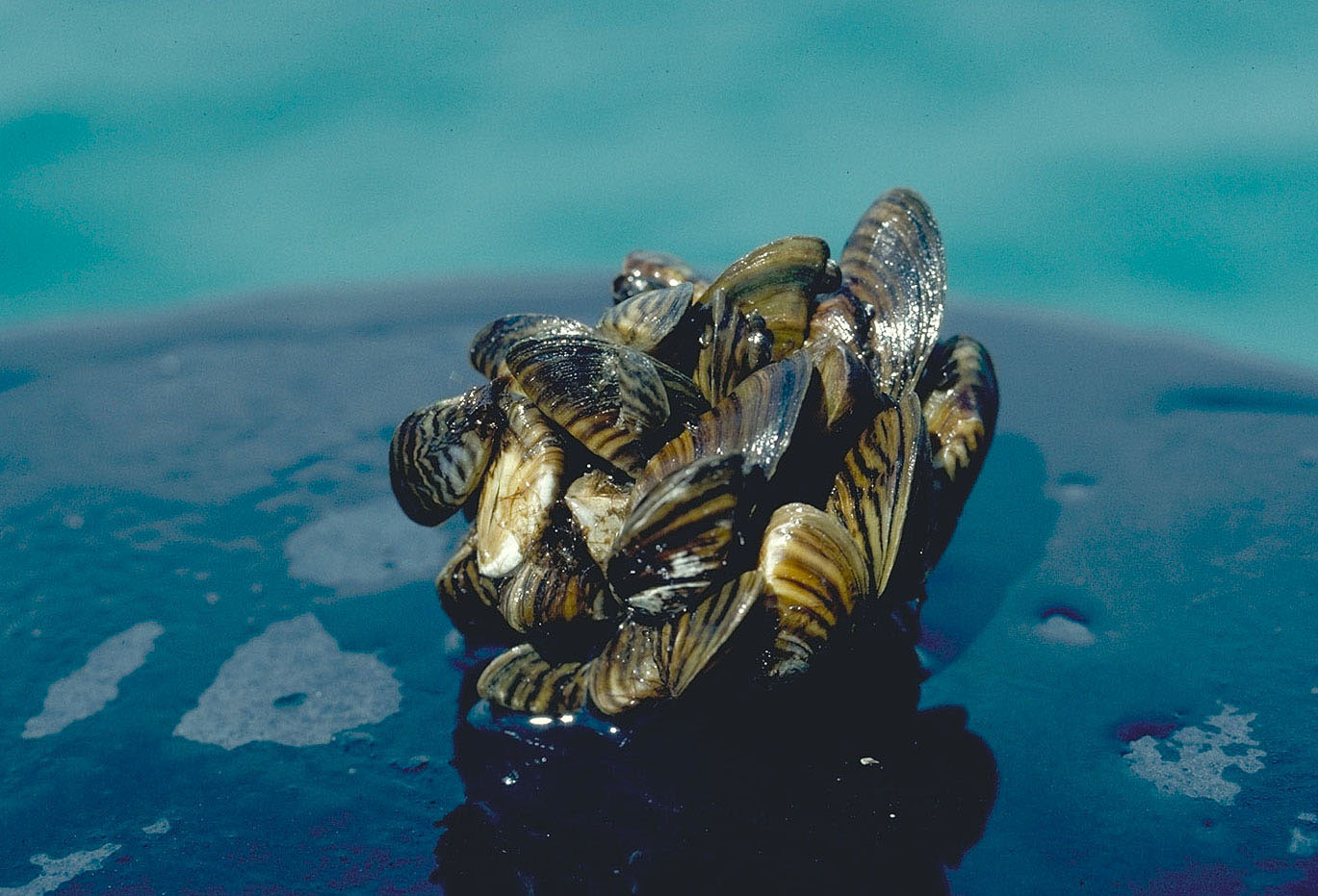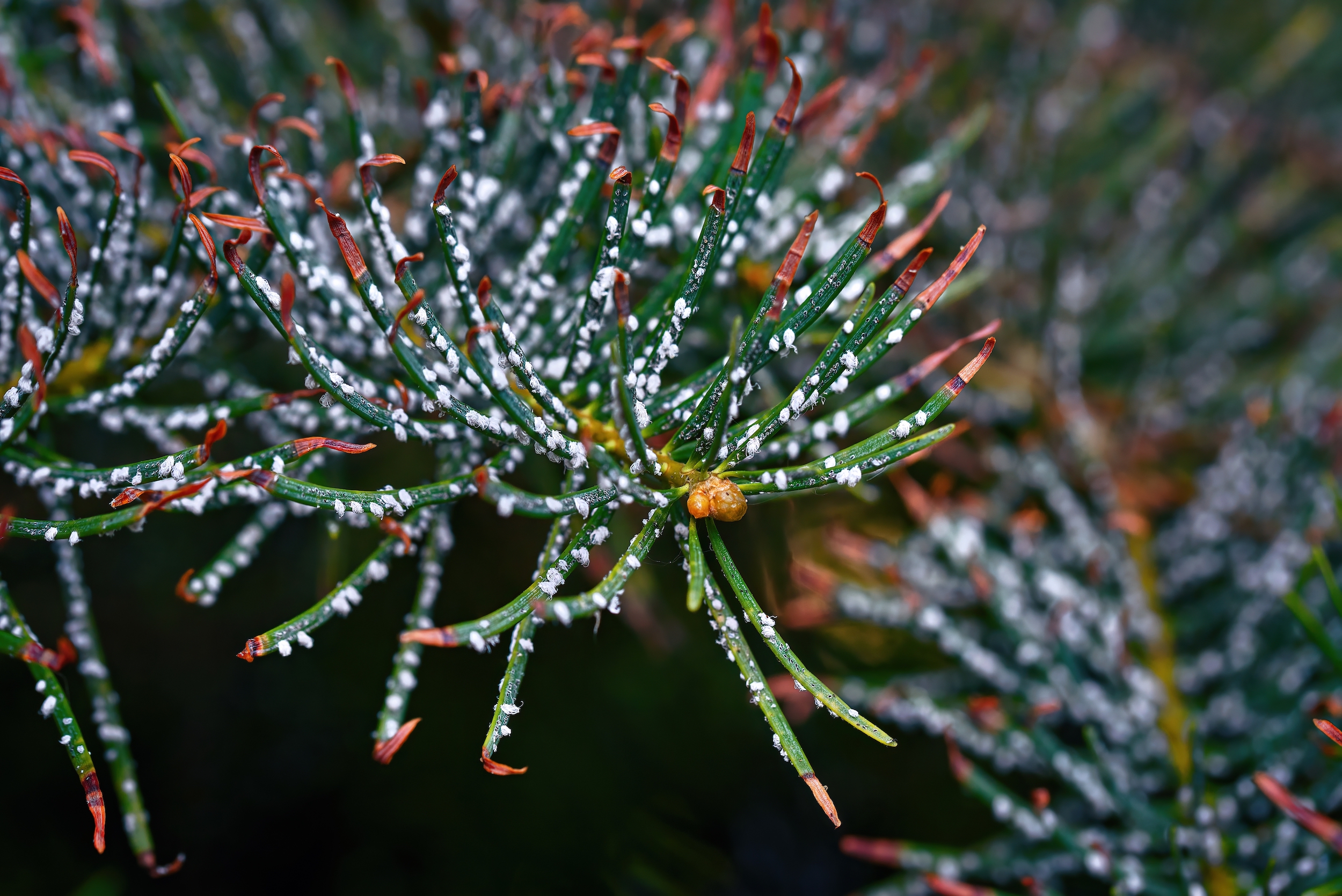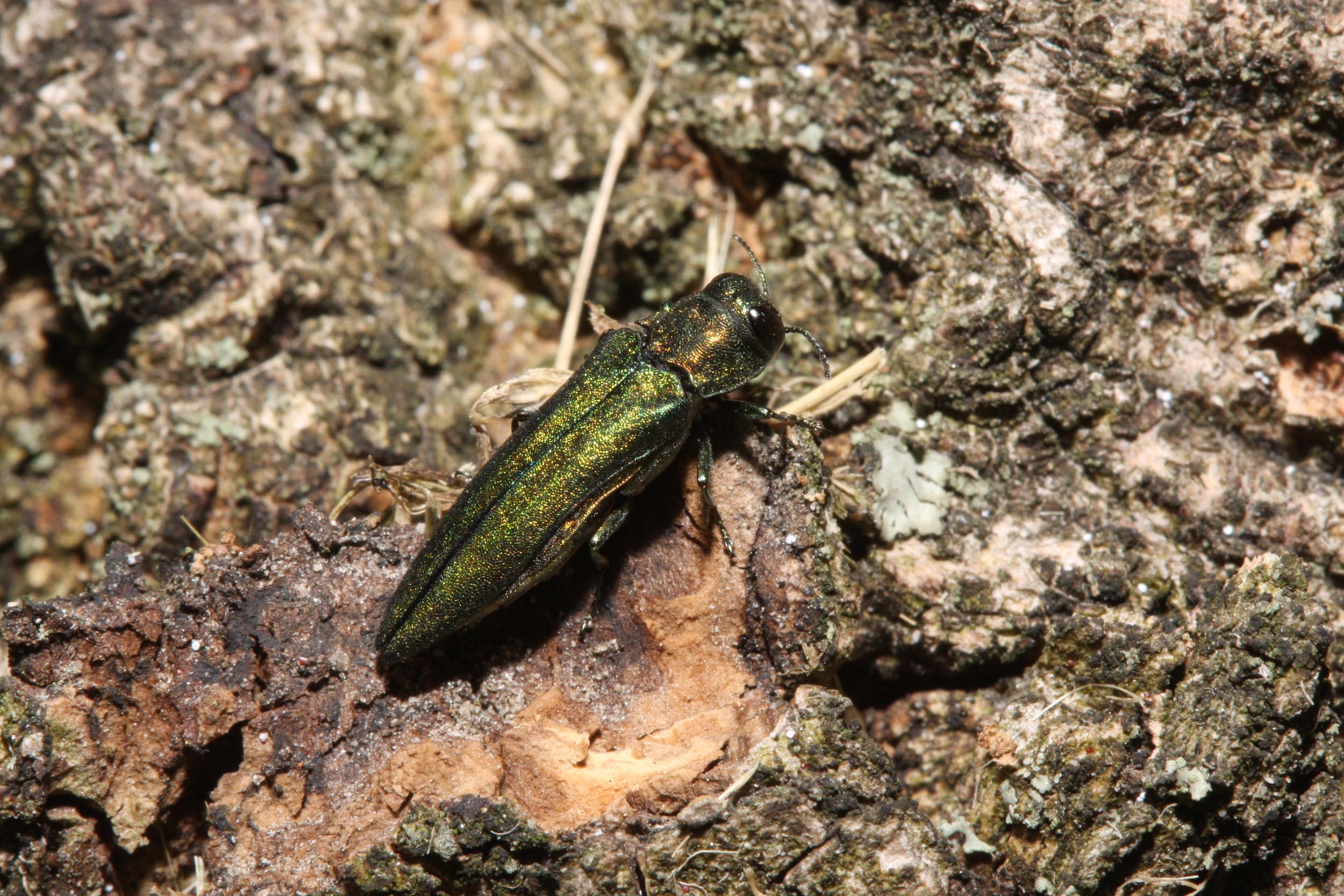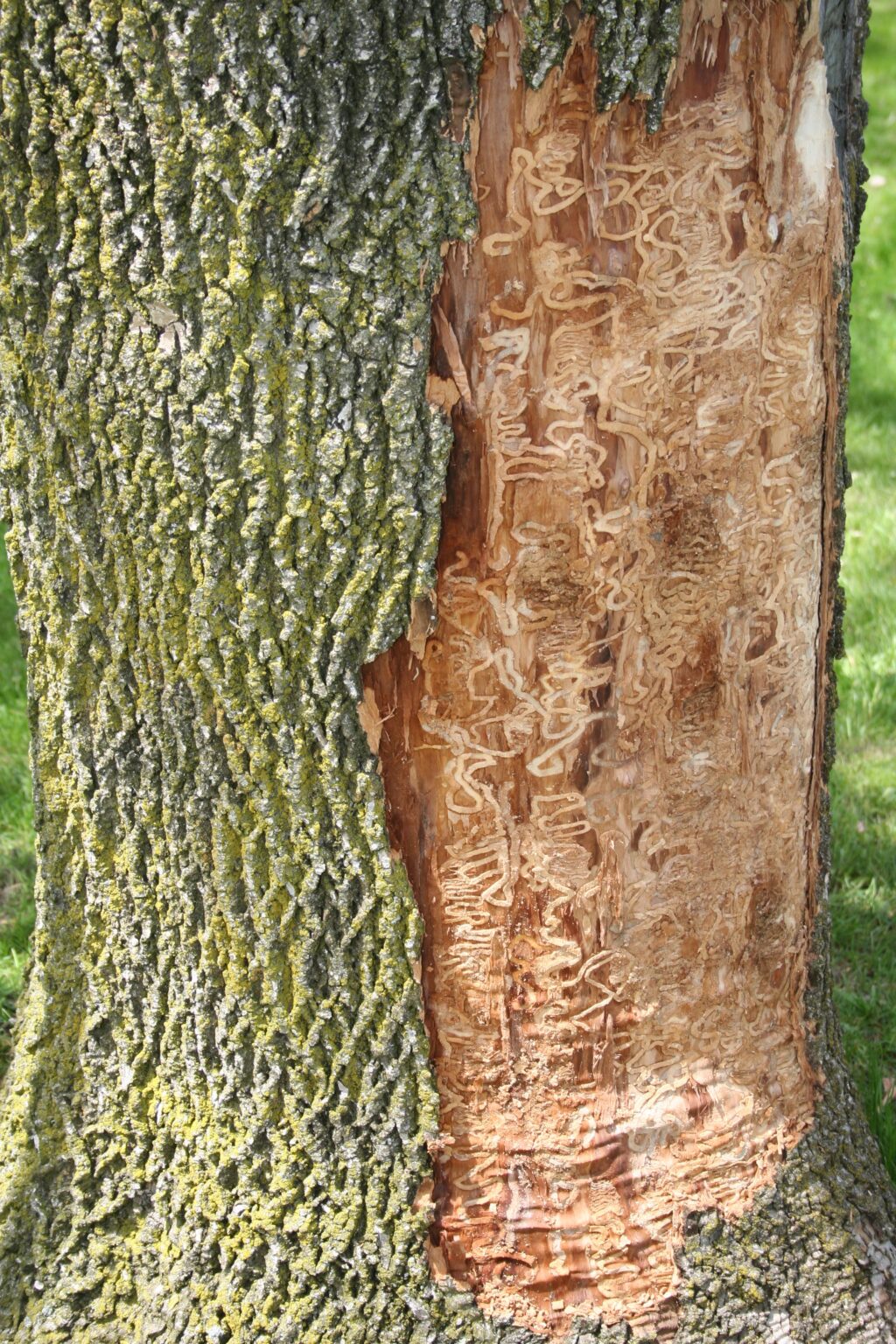
B.C. Supreme Court rules logging company can’t claim financial losses due to conservation
Forestry giant Teal sued for $75 million in compensation after old-growth trees on Haida Gwaii...
This story was originally published in The Pointer.
The emerald ash borer has caused hundreds of millions of dollars in destruction to local tree populations and forests across Canada. The invasive wood-boring beetle native to parts of Asia arrived here more than 20 years ago and was first seen in Ontario in the summer of 2002.
Researchers believe the infestation probably spread after the first insects burrowed into wood shipping pallets and containers bound for the Detroit area about a decade earlier, then made their way to Ontario.
The federal government reports the invasive species has spread to about 30 U.S. states and five provinces, killing 99 per cent of all ash trees “within eight to 10 years once the beetle arrives in an area.”
A decade ago, the City of Mississauga committed $51 million to manage the emerald ash borer infestation that had decimated the municipality’s tree canopy. Critics questioned what the provincial government was doing to combat the rapidly growing problem of invasive species.
In the Great Lakes, the introduction of zebra mussels was a complete accident. The mollusks, which are native to eastern Europe and western Russia, first made their way to North America through cargo ship ballast water: stored in the bottom of ships to ensure the vessel floats at the right depth and remains stable, it’s often flushed once cargo liners reach their destination. Zebra mussels spread throughout the Great Lakes as well as many other major water bodies across North America.
“With the global COVID-19 pandemic, people now understand the urgent need to act when a dangerous new virus or other biological threat emerges. The same is the case for responding to invasive species,” Ontario Auditor General Bonnie Lysyk wrote in a 2022 report. “Preventing their introduction is the most effective and economical solution for managing them.”
The audit, published by Lysyk in November, reveals these increased threats are not being met by environmental protections. Her audit determined the provincial government, specifically the Ministry of Natural Resources and Forestry, is underperforming in its duty to protect Ontario from new invasive species and control alien species already present.
“Overall, our audit found that the Natural Resources Ministry is not effectively monitoring and managing the introduction and spread of harmful invasive species in Ontario,” Lysyk stated.

While invasive species spread, climate change is becoming a growing concern. Peel Region is warming at twice the rate of the global average, putting the region at risk for the arrival of previously far off species and pathogens. Blacklegged (deer) ticks were previously unheard of in Ontario, fended off by cold winters. But with increasing temperatures, the changing climate welcomes this new species to the ecosystem, and a new pathogen that comes with it: Lyme disease.
According to the Intergovernmental Science-Policy Platform on Biodiversity and Ecosystem Services, invasive species are one of the five biggest threats to biodiversity, adding to the list of changes in land and sea use, direct exploitation of organisms, climate change and pollution.
Ontario is at a higher risk of new introductions due to its proximity to international shipping channels, multiple land and water entry points and large volumes of imported goods. It has the highest number of invasive species of all the provinces and territories with at least 441 invasive plants and 191 non-native and invasive aquatic species in the Great Lakes. These are only what have been identified.
The provincial Ministry of Natural Resources and Forestry did not respond to The Narwhal’s request for comment.
In her 80-page audit, Lysyk made 12 recommendations, with 37 action items aimed at exposing the failure of the provincial government to protect Ontario’s natural ecosystems, and crucial steps for improvement.
Lysyk’s audit brings to light the mismanagement of invasive species by the Natural Resources Ministry and looks at the role of other levels of government in combatting the growing problem. In Ontario, the ministry is responsible for administration and enforcement of the Invasive Species Act and implementation of the Invasive Species Strategic Plan, as well as providing funding to groups that deal with the management of non-native species.

Lysyk found there are significant gaps in collaboration between the ministry and federal partners. For example, the Canadian Food Inspection Agency says it has been working since 2019 to collaborate on a response to hemlock woolly adelgid, an invasive insect that kills hemlock trees. According to food agency, the ministry has not responded to any of the calls to action outlined in Canada’s 2018 hemlock woolly adelgid management plan.
“The ministry is responsible for working with and providing guidance to other ministries, partners and stakeholders in Ontario to coordinate actions that address the threats posed by invasive species,” Lysyk wrote.
The auditor general’s office conducted a survey which found 85 per cent of municipal respondents and 74 per cent of conservation authority respondents did not know their designated role in the province’s response.
Despite the lack of provincial coordination, municipalities across Ontario are implementing strategies to protect their communities from invasive species.
In Peel Region, Mississauga has a specific management plan and implementation strategy: in its most recent budget, Mississauga put forward $270,000 for invasive species management, with an additional $4,050,000 allocated for emerald ash borer management and $100,000 for aerial spraying for the invasive LDD moth, or spongy moth, and cankerworm. Brampton categorically deals with invasive species in its natural heritage and environmental management strategy.
Despite Queen’s Park’s responsibility, the financial toll is being felt by municipal property taxpayers. It is estimated that invasive species-related costs for 2021/2022 incurred by municipalities and conservation authorities were over $50 million. Meanwhile, the Natural Resources Ministry dedicated less than $4 million annually to programming. The combined amount spent by municipalities, conservation authorities and provincial Ministry of Transportation on a single invasive species — phragmites — was higher than the total the Natural Resources Ministry spent on all invasive species programming the same year.
According to a study commissioned by the Invasive Species Centre in 2017, the economic impacts across all of Ontario’s sectors is estimated to be $3.6 billion per year. Yet the provincial government invests only $4 million annually in invasive species programs.
The Natural Resources Ministry is not properly staffed to deal with the worsening problem. According to the audit, the ministry has only five staff dedicated to full-time work within its biodiversity and invasive species section. It had the equivalent of just one staff member performing risk assessments for invasive species when the audit was conducted.
In 2014/2015 and 2017/2018, the ministry requested additional funding from the Treasury Board to acquire more staff for invasive species work. The board denied the request for funding, and directed the ministry to divert the funds from other programs and projects. The ministry did not follow these instructions, leaving the positions unfulfilled.
Municipalities have been forced to step in.

In 2022, the Invasive Species Centre published a Canada-wide survey that determined Ontario municipalities were struggling more than those in other provinces and territories to finance invasive species work. Ninety-one percent of respondents reported insufficient funding, limiting their ability to address dire problems.
“Credit Valley Conservation Authority’s invasive species strategy identifies 31 priority actions, but its staff informed us that it does not have the funding nor staffing resources to undertake a comprehensive approach to managing invasive species within the Credit River watershed,” Lysyk wrote, adding that not all conservation staff are even properly trained in identifying invasive species.
The Ontario Federation of Anglers and Hunters is supposed to receive program funding to help manage invasive species and hires approximately 20 to 25 summer staff each year to deliver community level outreach, species monitoring and management activities across the province. In 2019/2020, the Natural Resources Ministry abruptly reduced the project’s funding by 43 per cent, but did not communicate it with the federation until after work contracts were signed. As a result, the federation cancelled that year’s work. The program has since been reinstated, but with a decrease in staffing.
As a result of the lack of staffing and financial resources, Lysyk found there is a significantly prolonged time frame for identification and response to invasive species. In January 2022, 12 new invasive species were regulated (excluding wild pigs which followed a separate process). On average, risk assessments for these regulated species took approximately four years, leaving a large gap between species sighting and regulation.
The Invasive Species Strategic Plan was implemented in 2012, before the implementation of the Invasive Species Act in 2015, and predates modern technologies that could now be used to control a range of problems. Following the Strategic Plan, the ministry never developed an implementation plan or action plan, and in the 11 years since implementation, the Strategic Plan has not been updated, which Lysyk said has “led to largely fragmented and localized activities across the province.”
With a lack of uniformity around an implementation plan, there are a significant number of threats going undetected. The audit found 33 high-risk species that have been detected in the province but are not being tracked and reported on by the Ministry. A multinational study conducted in 2017 found Canada ranks in the top 10 of all countries tracked for the sum of recorded invasive species. In 2002, it was estimated there were at least 1,442 such species in the country. More have likely arrived in the 21 years since the estimate, and many may still be undetected.
A significant proportion of species sliding by unnoticed are terrestrial plant species. The audit concluded they are receiving insufficient assessment compared to aquatic species.
“This lack of focus increases the risk that new introductions and spread will occur in Ontario,” Lysyk wrote.
The import and sale of invasive terrestrial plant species is largely unaccounted for. Importation of plants for landscaping and ornamental purposes make up 52 per cent of all intentional introductions of invasive plants in Canada. The audit found that six of 30 unregulated terrestrial plant species are being sold in garden centres and nurseries across the province. In 2016, the ministry established a tool to evaluate ecological impacts of aquatic invasive species in Ontario, but in the seven years since, a similar tool has not been made available for terrestrial species.
Across the province, there is no unified framework to identify and respond to invasive species. The closest thing Ontario has to a widespread system is the Early Detection and Distribution Mapping System, which anyone can use to report invasive species sightings. Rebecca Rooney, a wetland ecologist and associate professor at the University of Waterloo, said easy to use, digital reporting tools like the early detection mapping system and iNaturalist are excellent tools for faster and more widespread identification of species.
“That’s really allowed a new level of surveillance that even five years ago, was kind of inconceivable, we have these apps now that really detail the distribution of all these species,” she said. “More eyes on the ground capacity for rapid responses are really important.”

But even with the availability of these tools, public knowledge is waning. A study conducted by the auditor general’s office found 66 per cent of Ontarians did not know how or where to report invasive species sightings. Proper coordination is required for further action on their management.
“If you get rid of whatever invasive species in this part of the watershed is just going to reinstate. You have to get rid of a whole watershed and that really requires some kind of coordination,” Rooney said.
She stressed the importance of continual measures to monitor environments for invasive species. Otherwise, taxpayers will continue to pay for the consequences of inaction, and our ecosystems will continue to be devastated.
Just visit an urban forest that was once populated by vibrant ash trees, with their petrified skeletons now scattered across the ground.
“We started the game really ambitious in 2015,” she said. “And we fail to live up to that ambition.”
Content for Apple News or Article only Get the inside scoop on The Narwhal’s environment and climate reporting by signing up for our free newsletter. This...
Continue reading
Forestry giant Teal sued for $75 million in compensation after old-growth trees on Haida Gwaii...

An Alberta government-commissioned report suggests oil and gas site companies may be able to install...

This story about a lawsuit involving First Nations in northern Ontario has deep roots — in...

